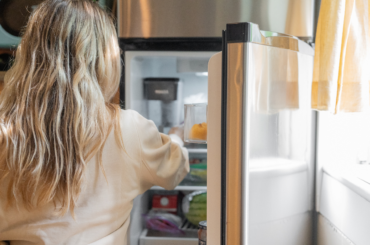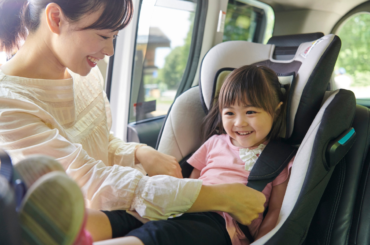There is a lot to process in the news right now, and many people are feeling a deep sense of urgency around topics like police brutality and systemic racism. As parents, it’s also our job to guide our kids through what’s going on, even if we are still grappling with it ourselves.
Whether kids overhear the news and start asking questions, or you’re wondering how much to shelter them from what’s going on, or you’re realizing you need to boost their awareness in some way—the disturbing and traumatic stories that are in everyone’s media feeds these days may seem anything but kid-friendly.
And yes, it’s important to limit our media intake for ourselves and our kids. However, it’s also vital that we directly address what’s happening and why, and support our children as they learn about and process it. Being silent teaches kids that there’s something wrong with talking about race and racism.
“Whether from social media accounts, conversations with peers or caregivers, overheard conversations, or the distress they witness in the faces of those they love, children know what is going on,” Rhea Boyd, M.D., a pediatrician and expert on structural racism, inequity and health, told CNN. “And without the guidance and validation of their caregivers, they may be navigating their feelings alone.”
Besides, as Nia Heard-Garris, M.D., a pediatrician who heads the AAP’s section on minority health, equity and inclusion, pointed out in TODAY Parents, “To have a long lasting and enduring, nurturing relationship with your kids being honest is really important.”
For the youngest kids—toddlers, preschoolers, and kindergarteners—a good approach to beginning to explain the concepts of racism and injustice is to focus on the concept of unfairness. Use examples of unfairness that they can understand from experience, like a sibling not giving them a turn with a game or toy. Then relate that, in simple terms, to why people are protesting right now.
Young kids also need to be exposed to positive representations of people of all races doing everyday, relatable things. From a young age, explained Jacqueline Dougé, M.D., a pediatrician who authored an AAP policy statement on the impact of racism on children, “Kids are starting to see what other people look like and what’s normal. A white kid can ride a bike or black kids can ride a bike or Hispanic kids can ride a bike. Kids need to be exposed to differences that are normal and celebrated.” If you don’t see that kind of diversity in your own neighborhood, then seek out books and media that can help fill in those gaps.
So for this age, while they may not understand what is going on in current events, it’s not too early to introduce the topics of racism and injustice. “Talking about this early and often is really important,” Dr. Heard-Garris reminds us. “It’s an ongoing conversation. It should not be a one off.”
As kids get older, conversations can be expanded more and more. For elementary-aged kids and older, parents should make a point of setting aside other distractions and checking in with them about distressing events: Dr. Boyd suggests, “Ask them what they know and what they’ve seen. Ask them how they are feeling. Validate their feelings and let them know what you are doing to keep them safe—be it in your home or your community.”
Encourage kids to ask any questions they want without fear of judgment. Parents may not know all the answers, and that’s okay; simply use those gaps as an opportunity to research the history together. Seek out books and age-appropriate videos about discrimination and about ways that protest has led to change in the past.
The older kids are, the more adults will have to remember to let kids lead conversations. Tweens and teens are unlikely to want to listen to you spout your own knowledge, but might want to have a debate with you or explain something that they’ve seen in their social media feed. Let this lead you towards something you can watch together or an activist you can both follow on social media, in order to continue learning the history and discussing the issues.
Families with kids of any age can use these discussions as a jumping off point for deciding how they want to contribute to a more just society. Whether it’s donating to organizations working on ending police brutality, writing postcards in support of local candidates who strongly advocate for anti-racist policies, safely attending a protest or rally, sharing valuable information from black leaders and experts, or diversifying your book collection to better reflect your values—there’s something you can do together to show, not just tell, young people that you care.







